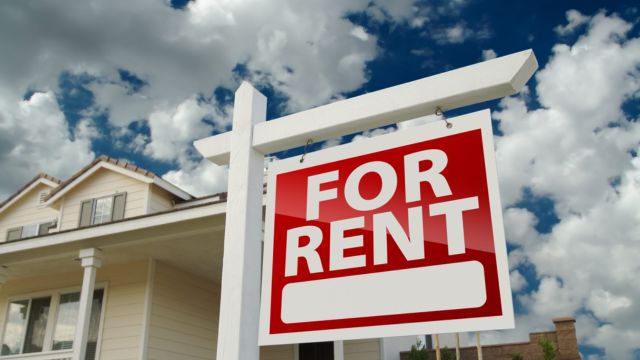Sky-high salaries and a lack of housing inventory in Silicon Valley are pushing rent prices higher and establishing a new definition of what is considered low-income in the region.
Let’s start with rent prices.
The Bay Area’s relatively high salaries and low housing inventory are keeping rents persistently higher than most of the country.
Across the country, the amount of money needed to make annually to afford to rent an apartment is down to about $63,000 on average, but in Silicon Valley that number is doubled, with $127,000 in salary needed to afford a typical one-bedroom home, according to housing tracker Redfin.
“That big gap exists because the Bay Area hasn’t done a great job of building housing for the middle earner,” said Daryl Fairweather, chief economist at Redfin. “They have tended to focus more on those higher earners.”
And partially because of those high salaries, a household income of $146,000 a year or less for a family of four is now considered low income in Santa Clara County, according to the National Low Income Housing Coalition.
“It’s still quite expensive to rent in the Bay Area, but incomes have been improving at a faster clip than rents have been climbing,” Fairweather said.
The cost of renting in the Bay Area has long been a challenge for residents, but recent data highlights just how dire the situation has become. To secure a one-bedroom apartment in this region, tenants now need to earn a staggering $127,000 annually. This steep requirement reflects a broader trend of rising housing costs in one of the most expensive real estate markets in the country.
As housing prices soar, residents—particularly those in lower and middle-income brackets—are feeling the squeeze. For many, the dream of renting in the Bay Area is slipping further out of reach. Let’s dive into why these rents are so high, who’s being affected, and what might be done to address the crisis.
The Rising Costs of Bay Area Rentals

The $127K income requirement comes from the combination of high rental prices and the traditional calculation used by real estate experts: your rent should not exceed 30% of your gross income. According to recent reports, the average monthly rent for a one-bedroom apartment in key cities across the Bay Area has climbed dramatically. For instance, in San Francisco, the median rent for a one-bedroom has exceeded $3,500 per month, with some areas seeing even higher prices.
In order to comfortably afford a $3,500 monthly rent without straining finances, experts suggest that tenants should earn at least $127,000 annually. Unfortunately, for many Bay Area residents, this figure is simply out of reach. The median household income in the region hovers around $100,000, but that’s still far below the $127K threshold needed for rental affordability.
Why Are Rents So High?
Beth Marie’s Old Fashioned Ice Cream: A Texas Tradition Serving Up Delicious Treats
Several factors contribute to the sky-high rents in the Bay Area, creating an ideal situation for renters:
- Limited Housing Supply: The Bay Area is notorious for its tight housing supply. Decades of underbuilding have led to a shortage of homes and apartments. Even though new developments are underway, they often target higher-income residents or are priced beyond the reach of most renters. Zoning laws, environmental regulations, and the difficulty of finding available land for development have all played a role in limiting new housing construction.
- Tech Industry Dominance: The Bay Area is home to Silicon Valley, where tech companies like Google, Facebook, and Apple are headquartered. The influx of highly-paid tech workers has driven up demand for housing, pushing rents higher as they compete for available units. This dynamic is particularly felt in cities like San Francisco, Mountain View, Palo Alto, and Cupertino, where the concentration of tech workers is highest.
- Investment Properties and Airbnbs: The rise of short-term rental platforms like Airbnb has exacerbated the housing shortage. Landlords have increasingly turned to short-term rentals for higher profits, removing long-term rental units from the market and further limiting options for renters.
- Inflation and Increased Demand: The broader economic conditions, including inflation, rising construction costs, and high demand for housing, have also played a role in driving up rental prices. As more people flock to the Bay Area for work and lifestyle reasons, the demand for housing continues to outpace supply.
Who Is Being Affected?
NYC Taxi Drivers Call for Change to Lock Doors During Rides
The sharp increase in rental costs is particularly hard on lower- and middle-income residents. For many people in the Bay Area, housing costs already eat up a significant portion of their budget. The need to earn six figures to afford a single-bedroom apartment means that families, individuals, and seniors with fixed incomes are increasingly being priced out of the rental market.
Young professionals and students, who traditionally make up a large portion of the renter population, are also feeling the financial burden. Many are finding it harder to balance paying for rent with student loan debt, transportation costs, and everyday expenses. For those working in industries outside of tech or other high-paying sectors, the gap between income and rent has only widened.
People of color, particularly Black and Latino communities, are also disproportionately impacted by high rental costs, as they face systemic barriers to homeownership and financial stability. This adds another layer of inequality to the housing crisis in the Bay Area.
What Can Be Done?
The $127K threshold is a wake-up call to local governments and policy makers. Addressing the affordability crisis in the Bay Area will require coordinated efforts at various levels:
- Increasing Housing Supply: One of the most direct ways to address the housing affordability crisis is to build more homes. Local governments can loosen zoning laws, streamline the permitting process for new construction, and encourage affordable housing development to help meet the demand. There is also a need for affordable housing projects specifically designed for low- and moderate-income renters.
- Rent Control and Tenant Protections: Expanding rent control measures and tenant protections can help keep rents more affordable, particularly for those already living in rental units. Rent control policies in certain Bay Area cities have slowed the rate of rent increases, but broader, region-wide solutions could help ease the pressure on renters.
- Subsidies and Housing Vouchers: To help people meet the rising costs of rent, governments can expand rental assistance programs like housing vouchers and subsidies for low-income renters. These programs can provide some relief to households struggling to keep up with skyrocketing rent.
- Support for First-Time Homebuyers: Given that homeownership is often the ultimate path to housing stability, programs to assist first-time homebuyers—especially in high-demand areas like the Bay Area—could help more people move out of the rental market and into stable homes. Down payment assistance programs, affordable home loan options, and subsidies for first-time buyers could help balance the real estate market.
- Addressing Economic Inequality: Tackling the Bay Area’s affordability crisis will also require addressing the root causes of economic inequality. Expanding access to well-paying jobs, improving wages in low-income industries, and investing in affordable healthcare and education can help ensure that more residents have the financial stability needed to afford housing.
The news that Bay Area residents need to earn $127,000 annually to afford a one-bedroom apartment is a stark reminder of the growing housing affordability crisis in the region.
While there are no easy solutions, it is clear that action is needed—both at the local and state level—to tackle the rising rents and provide more equitable access to housing.
Without concerted efforts to increase housing supply, protect tenants, and create affordable housing options, many residents may continue to face an uphill battle in securing a place to call home in one of the nation’s most expensive markets.




